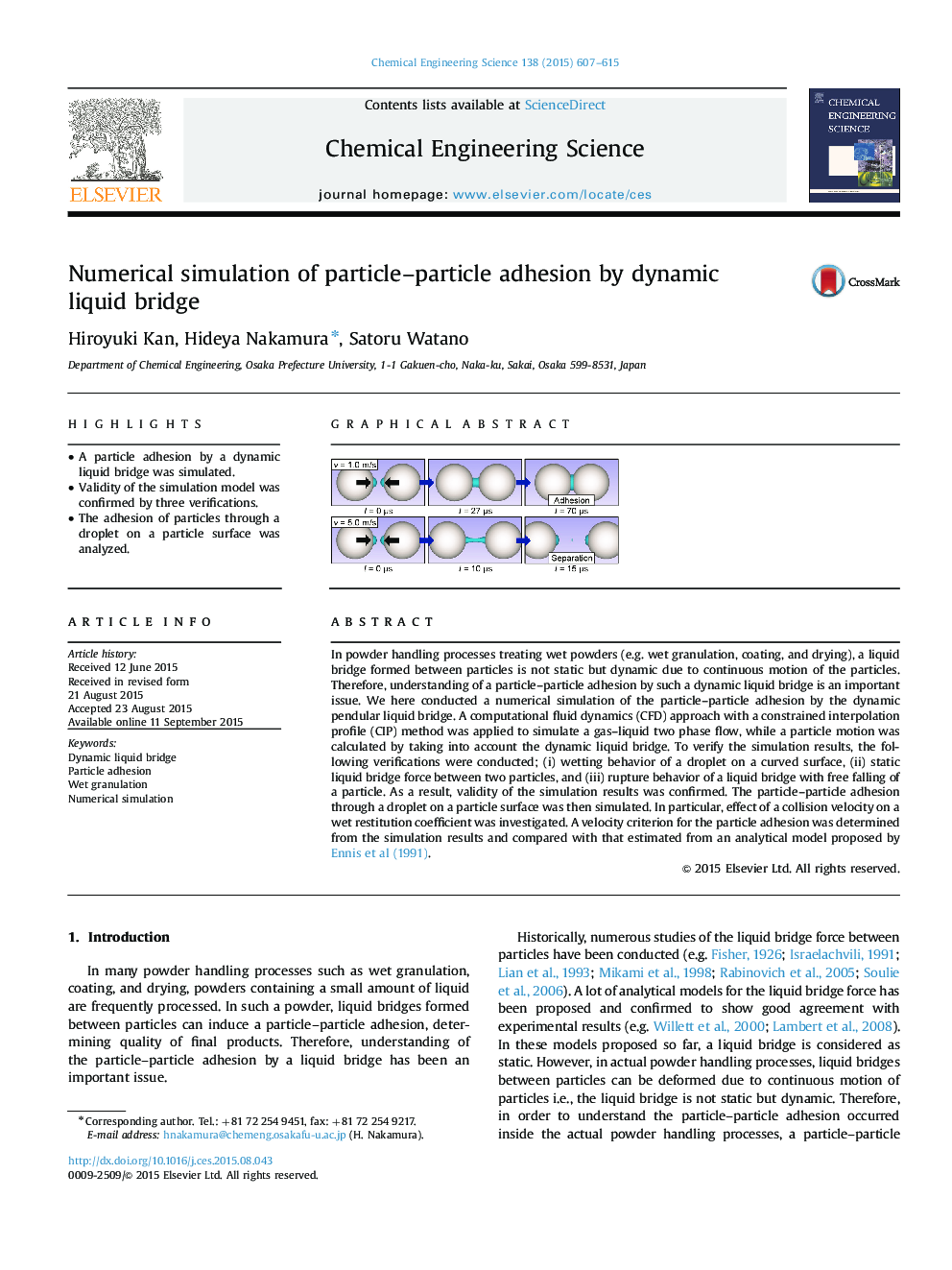| Article ID | Journal | Published Year | Pages | File Type |
|---|---|---|---|---|
| 154633 | Chemical Engineering Science | 2015 | 9 Pages |
•A particle adhesion by a dynamic liquid bridge was simulated.•Validity of the simulation model was confirmed by three verifications.•The adhesion of particles through a droplet on a particle surface was analyzed.
In powder handling processes treating wet powders (e.g. wet granulation, coating, and drying), a liquid bridge formed between particles is not static but dynamic due to continuous motion of the particles. Therefore, understanding of a particle–particle adhesion by such a dynamic liquid bridge is an important issue. We here conducted a numerical simulation of the particle–particle adhesion by the dynamic pendular liquid bridge. A computational fluid dynamics (CFD) approach with a constrained interpolation profile (CIP) method was applied to simulate a gas–liquid two phase flow, while a particle motion was calculated by taking into account the dynamic liquid bridge. To verify the simulation results, the following verifications were conducted; (i) wetting behavior of a droplet on a curved surface, (ii) static liquid bridge force between two particles, and (iii) rupture behavior of a liquid bridge with free falling of a particle. As a result, validity of the simulation results was confirmed. The particle–particle adhesion through a droplet on a particle surface was then simulated. In particular, effect of a collision velocity on a wet restitution coefficient was investigated. A velocity criterion for the particle adhesion was determined from the simulation results and compared with that estimated from an analytical model proposed by Ennis et al (1991).
Graphical abstractFigure optionsDownload full-size imageDownload high-quality image (287 K)Download as PowerPoint slide
